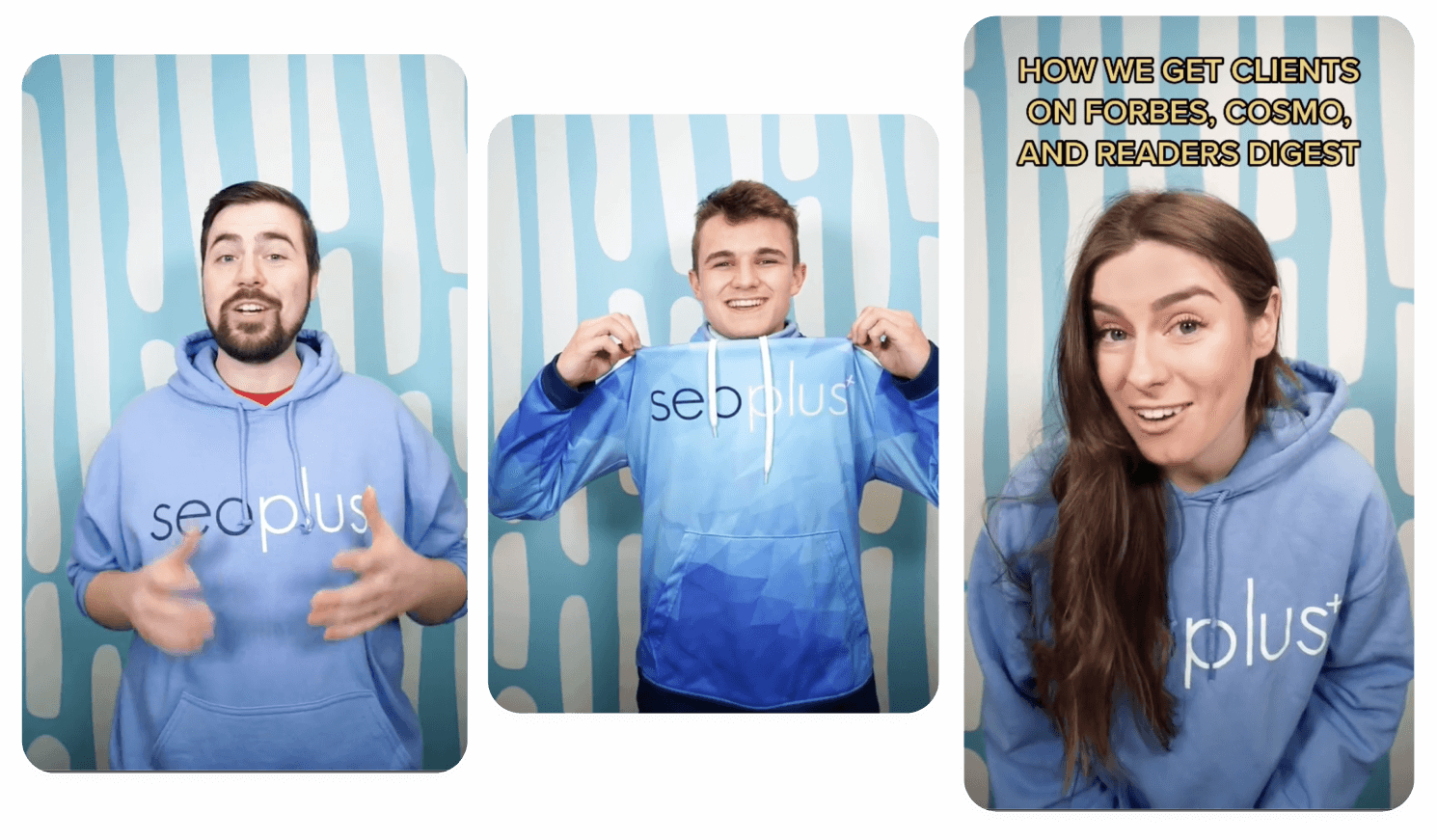Have you ever landed on a web page that was poorly written, without any helpful content, because it seemed to be optimized for the search engines and not you? Google’s new update will change that. If you’re just as guilty of this and your website has content that is unhelpful and overly SEO-optimized, you might want to think about updating or removing it.
Google is notorious for shaking up the lives of SEO specialists and marketers alike. Google recently announced that it will be rolling out a new algorithm update that is expected to be the largest change since Panda. If you’re not prepared for it, it might hurt the visibility of your website if it contains content that it deems “unhelpful.” So ignore it at your own peril.
What is the “helpful content update”?
The new helpful content update rolling out soon will be specifically targeting content that is written with the intent of pleasing search engines, rather than helping users. While this algorithm update is expected to have a significant impact, the concept isn’t new. Google has been really nailing down on user experience over the last few years.
How has content worked in the past?
I’m sure we can all remember the days where you would land on a website to a piece of content completely spammed with keywords to the point where it made no sense. While this has gotten better over the years, if you’re interested in SEO, it’s not hard to look at a website and identify that the content is heavily optimized for SEO purposes instead of users.
In 2011, Google launched the Panda algorithm update which focused on websites with thin or low quality content. Google wanted to reward websites with quality content that provided value to human users.
In 2014, the first mention of E-A-T was added to Google’s Quality Raters Guidelines. E-A-T stands for expertise, authoritativeness and trustworthiness. SEO’s use these guidelines to determine whether a website content is valuable to users, and ensure we’re putting our best foot forward to rank well within Google. While E-A-T is not technically a ranking factor, it is still crucial for SEOs to consider this when evaluating and creating content for a website.
As you can see, Google and SEOs have been considering content for quite some time. You’ve probably heard the phrase “content is king” before. This is becoming more and more important with the latest updates.
How does Google define “helpful content?”
We continually update Search to make sure we’re helping you find high quality content. Next week, we’ll launch the “helpful content update” to tackle content that seems to have been primarily created for ranking well in search engines rather than to help or inform people. This ranking update will help make sure that unoriginal, low quality content doesn’t rank highly in Search, and our testing has found it will especially improve results related to online education, as well as arts and entertainment, shopping and tech-related content.
Danny Sullivan, Google’s Public Liasion for Search via Google’s “The Keyword” Blog
The helpful content update is designed to ensure that users find high quality content that answers their questions. Google’s mission is “to organize the world’s information and make it universally accessible and useful.” Google will downgrade “search engine first” content (content written with the sole purpose of ranking well). This update will make it easier for users to find content that helps answer their query, and ensure they are landing on websites that provide the most helpful information.
The update is rolling out this week and will take roughly two weeks to roll out completely. During this time, we can expect to see a lot of fluctuations in rankings. Google will post and update their Google Search Ranking Update Page once the algorithm has fully rolled out.
Why does this update matter?
The helpful content update is expected to be a sitewide update, rather than the page-by-page approach usually taken with algorithm updates. For this reason, it is crucial to review your content as soon as possible and ensure the content on your site provides value to your users. If your site has a high quantity of low-quality content, your site is likely to be impacted by this update (even your helpful pages). Google has claimed that “removing unhelpful content could help the rankings of your other content.”
It’s easy to panic, thinking that this means we should abandon SEO best practices– but that’s hardly Google’s point with this update. Creating content geared towards what users want and value most is SEO best practices, and this update officially reinforces what Google has been gearing towards in recent years. Whether you’re a local small business, global enterprise, or passion-project blog, you operate to serve people– the content on your website should do the same.
Katie Ross, SEO Specialist with seoplus+
How can you prepare for this update?
Two words: content audit. More than ever it is crucial to run a full content audit of your website to ensure that your content is written with users in mind, and to flag and remove any low-quality pages that could negatively impact your website.
If you believe your site may be written with search-engine-first content, you will want to review your website content, from blog posts, to service pages, to the home page. When reviewing your content, ensure that blog posts have a clear purpose. You don’t need multiple short blog posts on the same topic when one long-form pillar page that would be really beneficial to your users. Consider your ideal user and the potential questions they may have. Does your content address these areas of concern? Will they leave your website with a positive experience and with enough knowledge on the topic to answer their original search query?
Consider the following when creating “user-first” content:
- Always create content that your target audience and existing users will find helpful should they land on your page.
- Consider E-A-T signals. Your content should clearly show that you are an expert in this topic and can provide factual information that will help users.
- For service pages, we believe having an FAQ section with common user questions is a great way to ensure you are writing for the user. Don’t forget to include FAQ schema.
- Content should consider the whole journey and answer all other possible questions, such as additional or related questions the user may have in relation to their query.
Avoid the following when creating content:
- There is no “best practice” word count. You want to create content that keeps users engaged and educated.
- Don’t write a post for the sake of writing a post. Create content with a defined purpose and a solution you are hoping to provide.
- Don’t create a post summarizing other posts. Create unique content with a unique point of view that will keep your audience engaged.
- Don’t create content with the intent of having a specific number of keyword insertions included. This always leads to content that is written for a search engine. Keywords should flow naturally into a piece of content when you are writing about a specific topic.
- Don’t create content where you are not an authoritative source just to get traffic. Produce content that has value to your audience where your experience and skills provides them with the best information.
What do our specialists think of this update?
The upcoming update, nicknamed “helpful content update”, is being described as the next generation of Panda as it heavily focuses on a site’s overall quality. The best way to prepare for it is by adopting the practice of writing high value content for users (And let’s be honest, if you aren’t already writing content focused on meeting user needs over SEO needs, what are you waiting for?)
If you happen to have a client that prioritizes SEO over user experience and has previously written low-value/spammy content that has not been removed from the site, this is likely the best time to give them a heads-up that they might be affected by this upcoming update.
Uly Neves, SEO Specialist with seoplus+
I believe the most practical way to prepare for this update is to manually review our content and ask ourselves. “Is the reader going to be satisfied with the content, considering their original search?” In other words, if we put ourselves into the shoes of the reader, “is there a question going to be answered?” “Is this problem going to be solved?”. If the answer is no, then we need to update the content or consider deleting or no-indexing the page.
Corey Bourada, SEO Specialist with seoplus+
Google’s helpful content guidelines are intended to help rank pages that actually provide value towards people looking to spend their hard earned money on goods and services. This is a practice we already utilize with our clients. As we know that Google wants its search engine to show only the highest quality queries for its users.
So our talented content team diligently creates service & product pages that match search intention. Our web development team adds infographics, widgets, and other tools on service & product pages that increase user experience. Which all whisks together to create incredibly user friendly pages that exceed expectations of what potential customers are looking for, making our clients truly stand out from their competition.
Jonathan Cohen, SEO Specialist with seoplus+
Google has specified that it could take months to recover after removing unhelpful content should you be impacted by this update. This update will run continuously in order to monitor new and existing sites. Should it decide that the unhelpful content has been removed for the long-term, you should see rankings start to improve.


